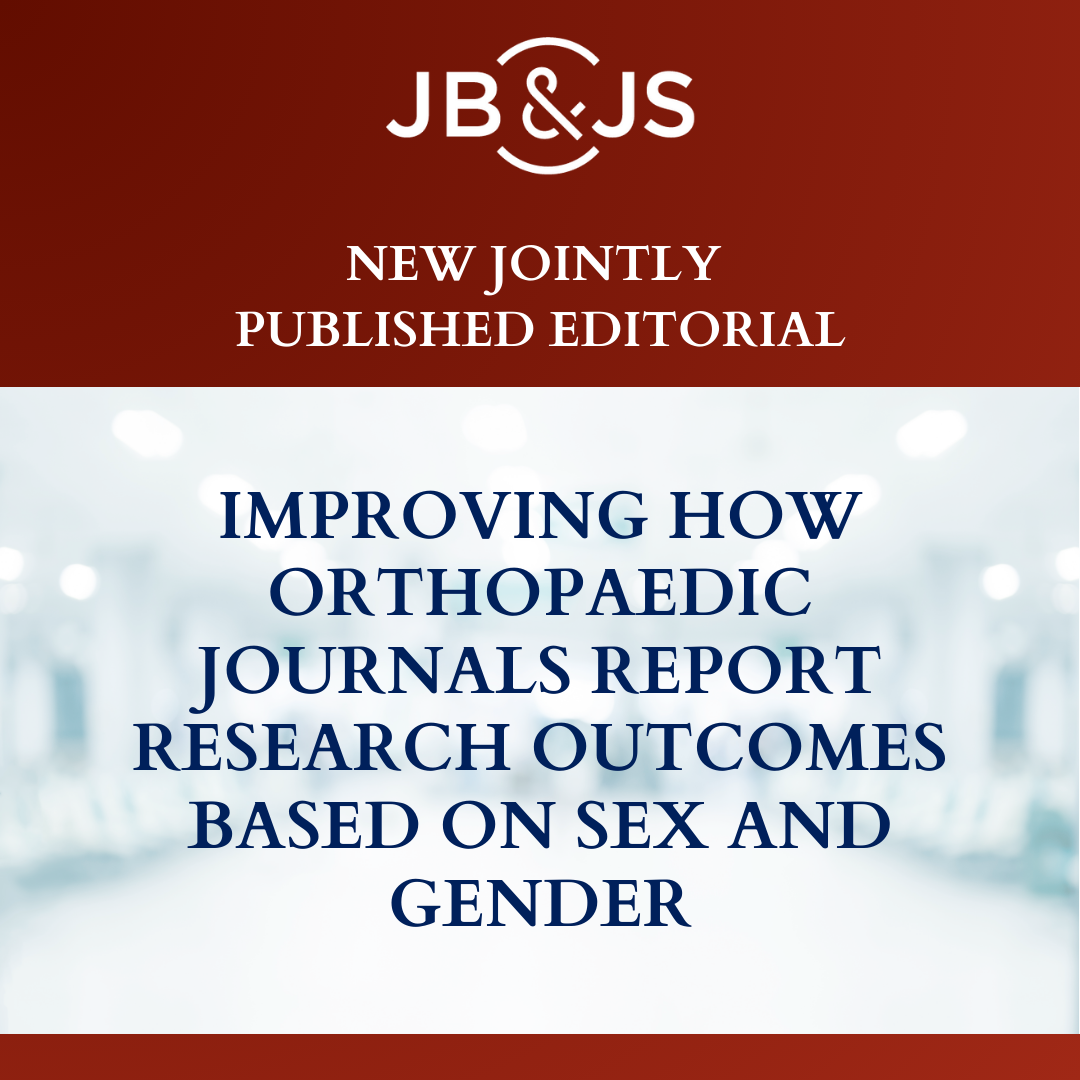In November 2023, leaders of the editorial boards of 6 orthopaedic journals, leaders of funding agencies, and officials from the National Institutes of Health met to discuss issues pertaining to the reporting of sex and gender in musculoskeletal research. Following the meeting, the participating editors reached out to the Editors-in-Chief of all indexed orthopaedic journals, seeking concurrence on key themes. A new editorial—now jointly published in Clinical Orthopaedics and Related Research, Journal of Pediatric Orthopaedics, Spine, The Journal of Bone and Joint Surgery, and Arthroscopy: The Journal of Arthroscopic & Related Surgery—presents several resolutions to which the editors listed in the byline and members of the Sex and Gender Research in Orthopaedic Journals Group have agreed.
Access the editorial: Improving How Orthopaedic Journals Report Research Outcomes Based on Sex and Gender by Seth S. Leopold, MD; Robert N. Hensinger, MD; Andrew J. Schoenfeld, MD, MSc; Marc Swiontkowski, MD; Michael J. Rossi, MD, MS; Kimberly J. Templeton, MD, FAAOS, FAOA, FAMWA; and the Sex and Gender Research in Orthopaedic Journals Group.
As noted in the editorial, “Musculoskeletal research, similar to research in other areas of healthcare, does not always disaggregate results based on a patient’s sex or gender[1]. Although some orthopaedic surgery journals have explicit editorial standards on the topic of sex and gender in scientific reporting, and although international entities have published sensible guidelines about it[2], we have observed that these standards are inconsistently applied[1].
“Inattention to high-quality standards of scientific reporting can harm patients[3,4]. Women have been underrepresented in medical research[5], and this trend continues to varying degrees…” The authors note that “doing better research—and improving how that research is reported in journals—would benefit our patients regardless of their sex or gender.”
A series of papers based on the proceedings of the November 2023 Sex and Gender Reporting in Musculoskeletal Research Symposium are currently in process and will be published in JBJS over the next several months.
Read the new joint editorial: Improving How Orthopaedic Journals Report Research Outcomes Based on Sex and Gender
References
- Gianakos AL, George N, Pinninti A, Kwan S, LaPorte D, Mulcahey MK. Sex- and Gender-specific Analysis in Orthopaedic Studies. Clin Orthop Relat Res. 2020 Jul;478(7):1482-8.
- SAGER Guidelines. https://ease.org.uk/communities/gender-policy-committee/the-sager-guidelines/. Accessed 2024 Mar 12.
- Yeahia R, Gennarelli RL, Morgan DJ, Korenstein D. Asymmetric Reporting of Harms and Benefits in Randomized Controlled Trials. J Gen Intern Med. 2022 Jun;37(8):2113-5.
- Mayo-Wilson E, Fusco N, Li T, Hong H, Canner JK, Dickersin K; MUDS investigators. Harms are assessed inconsistently and reported inadequately Part 2: nonsystematic adverse events. J Clin Epidemiol. 2019 Sep;113:11-9.
- Steinberg JR, Turner BE, Weeks BT, Magnani CJ, Wong BO, Rodriguez F, Yee LM, Cullen MR. Analysis of Female Enrollment and Participant Sex by Burden of Disease in US Clinical Trials Between 2000 and 2020. JAMA Netw Open. 2021 Jun 1;4(6):e2113749.



